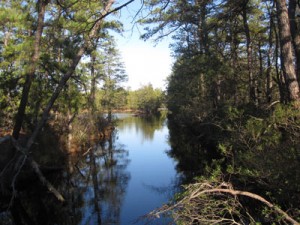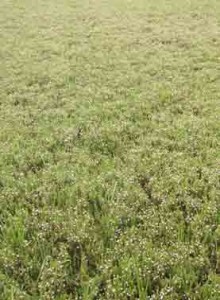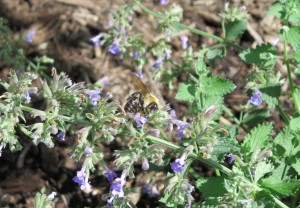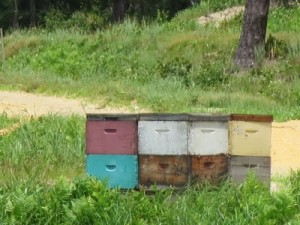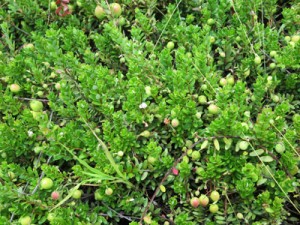We talked a little bit last June about how Pine Island works with beekeepers to make sure the bogs are pollinated during the bloom period.
This year, Pine Island rented more hives in order to cover the new acreage we will be harvesting this year. A good fall harvest depends on a successful growing and pollination season, and cranberry growers, like many fruit growers, rely on honeybees and bumble bees to cross pollinate blossoms. Production and yield is directly tied to good pollination and subsequent fruit set. In addition, pollinators are important to native plants, which provide food and cover for numerous wildlife species, as well as helping stabilize the soil and improve water quality.
As it turns out, the weather has not been greatly beneficial for pollination. June 2013 has been the wettest June in recorded history in New Jersey (average rainfall for the month was 9.2 inches), thanks to numerous heavy rainfall events such as the remnants of Tropical Storm Andrea. Another consideration in this year’s pollination effort is a worldwide “colony collapse disorder”, a phenomenon in which worker bees from a beehive or honey bee colony abruptly disappear. According to the USDA Agricultural Research Service, though there have been a number of claims, a cause or causes of CCD have not yet been identified by researchers. In order to protect their bee colonies, growers remain cautious and make sure their IPM best practices are bee-safe.
Fortunately, the wild bee and bumblebee population is up, and bumblebees will work in wet and/or windy conditions. Bumblebees have other advantages: they work faster, visiting many more flowers per minute. Their large size lets them carry huge pollen loads, allowing longer foraging trips, and achieving better contact with flowers. Larger deposits of pollen promote pollination as well as the formation of more uniform and larger fruit. Perhaps most importantly, bumblebees are naturally attracted to cranberry plants.
This is a consideration because on a cranberry plant, the anthers (the pollen-bearing part of the stamen) are shaped very differently from most other flowers, having an opening at the end of the anther, rather than splitting open to expose the pollen. This means getting the pollen out requires extra work by the pollinator. While some believe that honeybees are not as efficient at this task, single visits by pollen foraging honeybees can be enough to elicit fruit, especially in areas where weather during bloom is warm.
As you can see, bees are very important Pine Island team members, willing to do “whatever it takes” to maintain our environment and grow more fruit per acre!


